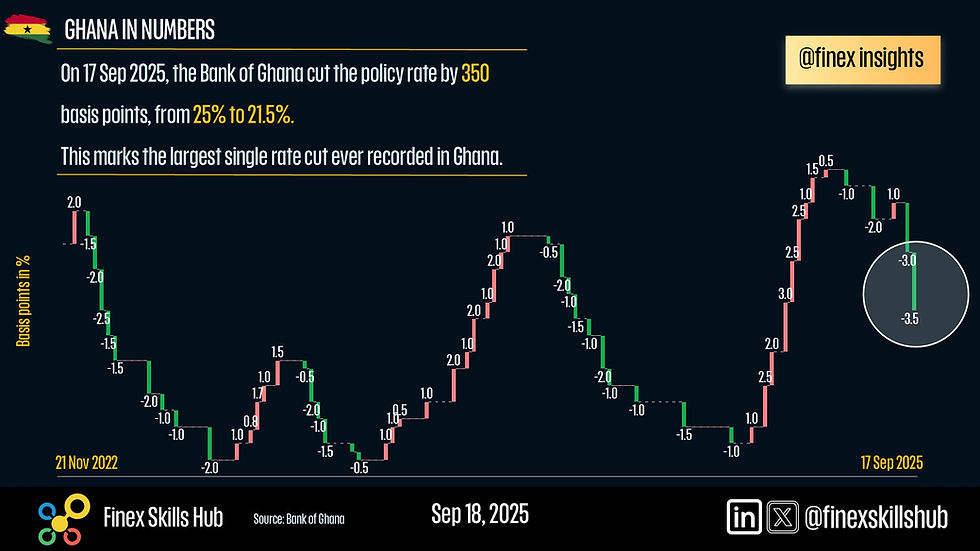Ghana Records Largest-Ever Policy Rate Cut: What the 350bps Move Means for the Economy
- bernard boateng
- 5 days ago
- 2 min read
Introduction
On September 17, 2025, the Bank of Ghana made history by cutting its policy rate by 350 basis points (bps), slashing it from 25% to 21.5%. This unprecedented move represents the largest single rate cut in the country’s monetary history. But what does this mean for businesses, households, and the broader economy?

The Significance of the Policy Rate
The policy rate, also known as the benchmark interest rate, is the primary tool the central bank uses to control inflation and influence borrowing costs. When the rate is high, borrowing becomes more expensive, cooling down inflation but slowing economic growth. When it is reduced, access to credit becomes easier, stimulating economic activity.
Historical Context
Over the past decade, Ghana’s policy rate has fluctuated widely in response to inflationary pressures, currency depreciation, and fiscal imbalances. Cuts in the past were typically between 50 to 200 basis points, making this 350bps cut highly significant.
Why Such a Sharp Cut Now?
Analysts suggest the decision was influenced by:
Declining inflation: Recent inflation data shows a steady slowdown, providing room for easing.
Economic slowdown: Businesses and households have faced high borrowing costs, stifling growth.
Currency stabilization: The cedi’s improved performance in recent months has reduced pressure on the central bank.
Implications for the Economy
Businesses: Access to cheaper loans could encourage expansion and investment.
Households: Mortgages, car loans, and personal credit facilities may become more affordable.
Government: The cost of servicing domestic debt may ease, freeing up fiscal space.
Investors: Lower rates could impact T-bill yields, making equities and other investments more attractive.
Risks to Watch
While the cut provides short-term relief, risks remain. If inflation resurges or external shocks hit the economy, the central bank may have to reverse course. Furthermore, large rate cuts can trigger capital outflows if foreign investors seek higher yields elsewhere.
Conclusion
Ghana’s bold 350bps policy rate cut signals a turning point in monetary policy. It underscores the central bank’s confidence in current inflation trends and its determination to stimulate growth. For businesses, households, and investors, this move could reshape Ghana’s economic landscape in the coming months.





Comments